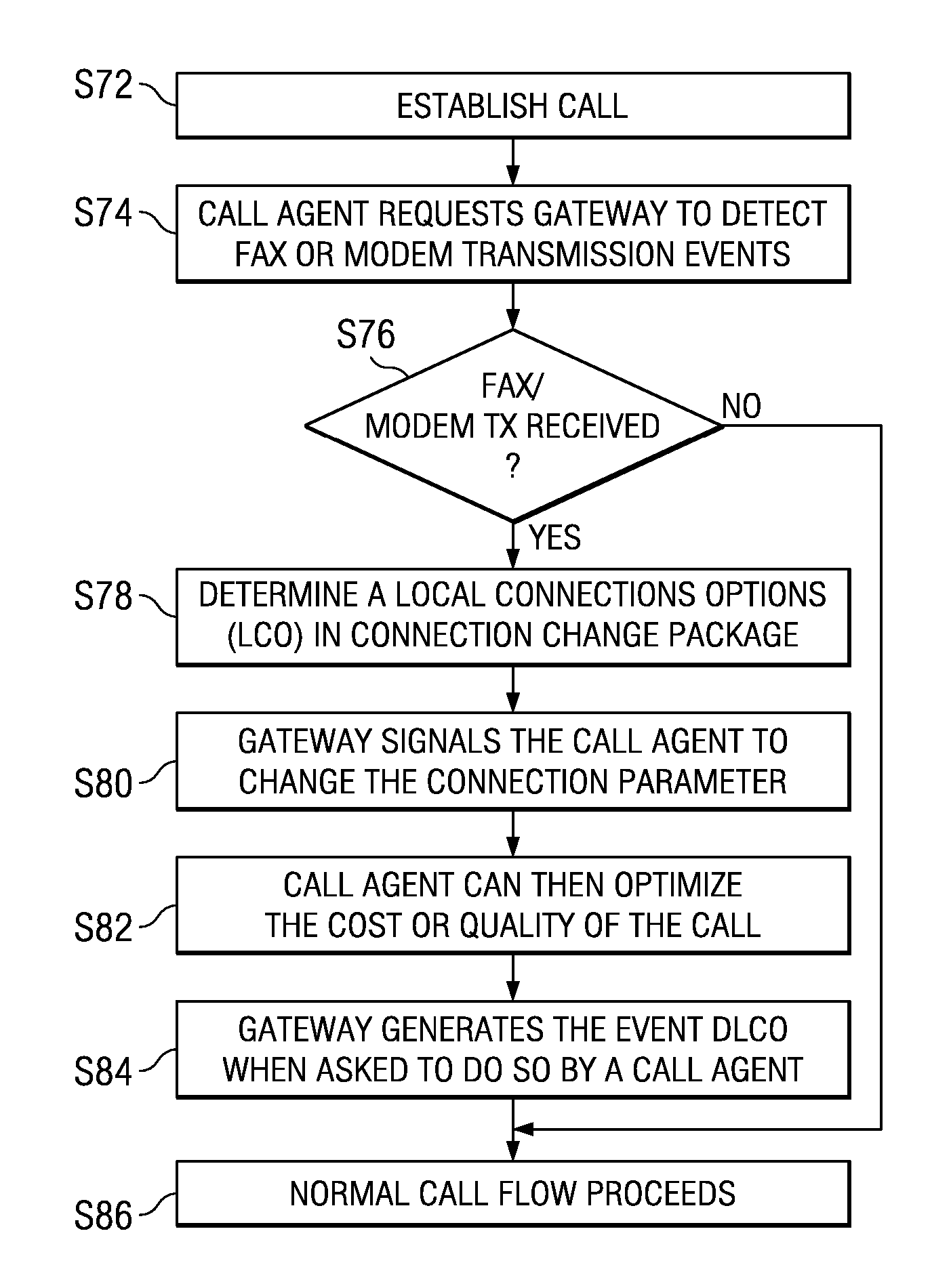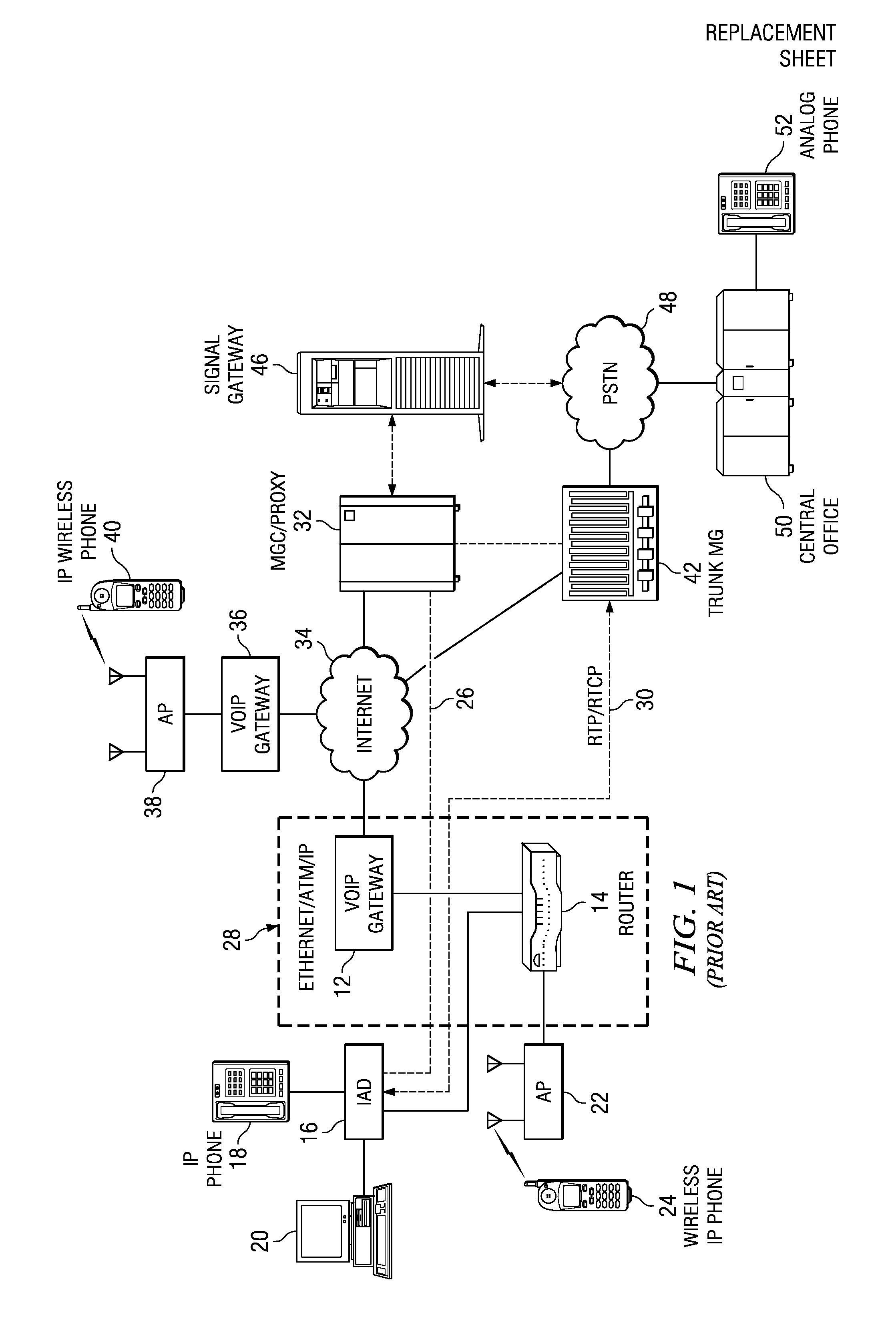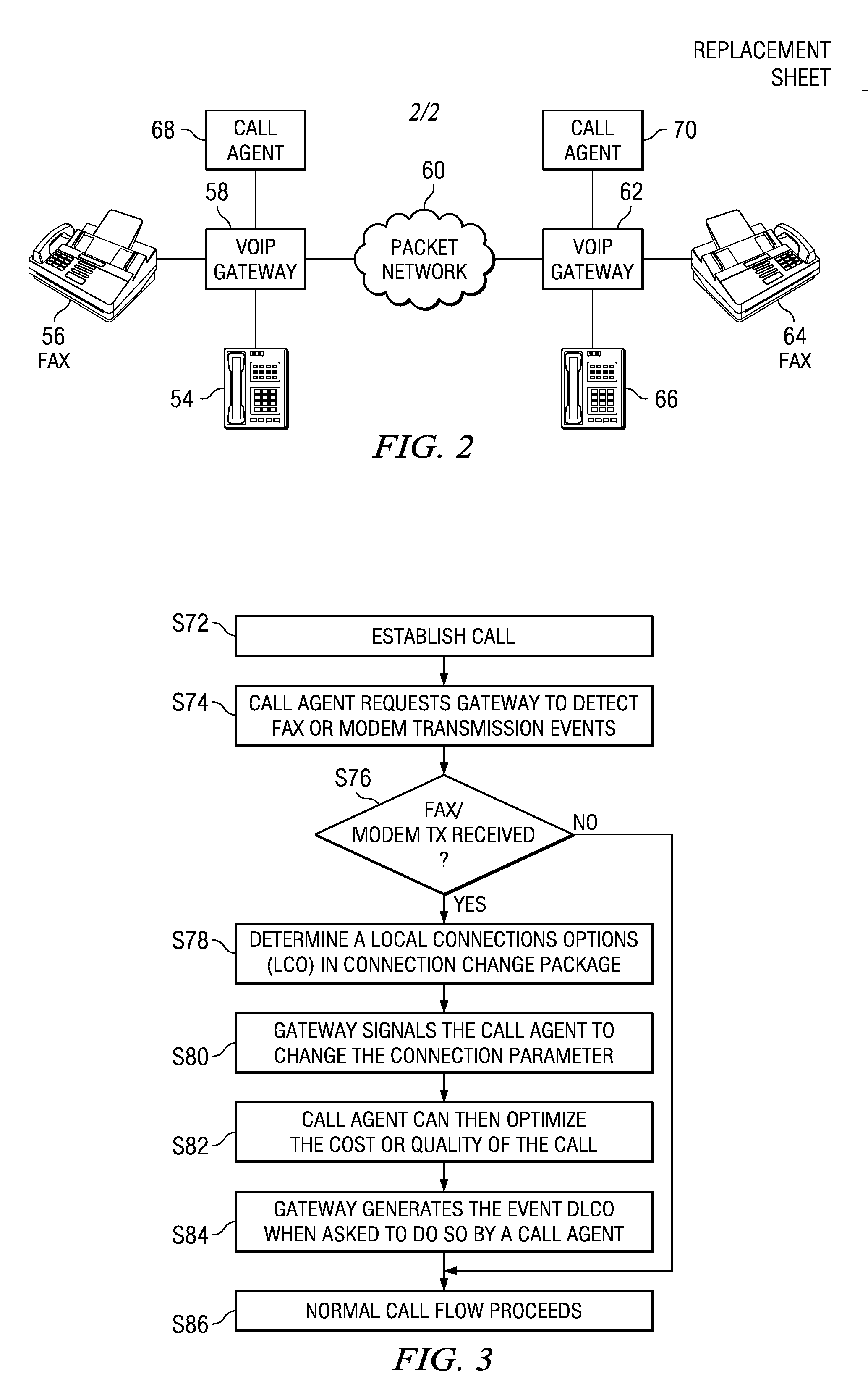Package for MCGP for cost and quality control in a VoIP system that simplifies fax/modem/TTY call setup
a technology of fax/modem/tty call setup and cost control, applied in data switching networks, digital transmissions, network connections, etc., can solve the problems of reducing limiting interoperability, and affecting the quality of voice transmission, so as to improve bandwidth utilization, control the cost and quality of voip calls, and reduce costs
- Summary
- Abstract
- Description
- Claims
- Application Information
AI Technical Summary
Benefits of technology
Problems solved by technology
Method used
Image
Examples
Embodiment Construction
[0020] There is described herein a technique to lower the cost and improve the quality of voice calls over IP networks by providing users the ability to select an appropriate codec during a voice over IP call. The invention gives users real-time control over the cost and quality of the voice call by monitoring the dynamically changing resources and network conditions on an IP network and allowing users to select appropriate codecs before and during the call.
[0021] A typical voice over Internet Protocol (VOIP) network is illustrated in FIG. 1. The network is a communication network that could be any managed network such as a packet network, Broadband IP network, Asynchronous Transfer Mode (ATM), Ethernet network, etc. The communications network comprises a router 14 connected to various customer premise equipment and a VOIP gateway 12. Gateways generally can monitor and detect events affecting a VoIP call that include available network bandwidth, processing power, delay, and jitter....
PUM
 Login to View More
Login to View More Abstract
Description
Claims
Application Information
 Login to View More
Login to View More - R&D
- Intellectual Property
- Life Sciences
- Materials
- Tech Scout
- Unparalleled Data Quality
- Higher Quality Content
- 60% Fewer Hallucinations
Browse by: Latest US Patents, China's latest patents, Technical Efficacy Thesaurus, Application Domain, Technology Topic, Popular Technical Reports.
© 2025 PatSnap. All rights reserved.Legal|Privacy policy|Modern Slavery Act Transparency Statement|Sitemap|About US| Contact US: help@patsnap.com



